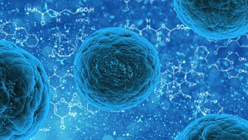

Understanding how mechanics complement bio-signaling in defining patterns during morphogenesis is an outstanding challenge. Here, we utilize the multicellular polyp Hydra to investigate the role of the actomyosin cytoskeleton in morphogenesis. We find that the supra-cellular actin fiber organization is inherited from the parent Hydra and determines the body axis in regenerating tissue segments. This form of structural inheritance is non-trivial because of the tissue folding and dynamic actin reorganization involved. We further show that the emergence of multiple body axes can be traced to discrepancies in actin fiber alignment at early stages of the regeneration process. Mechanical constraints induced by anchoring regenerating Hydra on stiff wires suppressed the emergence of multiple body axes, highlighting the importance of mechanical feedbacks in defining and stabilizing the body axis. Together, these results constitute an important step toward the development of an integrated view of morphogenesis that incorporates mechanics.
